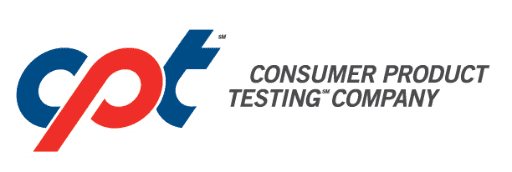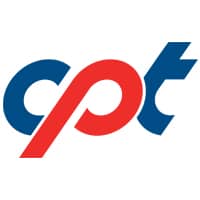The Modernization of Cosmetics Regulation Act of 2022 (commonly known by its acronym “MoCRA”) was signed into law on December 23, 2022. Its intent is to modernize federal regulatory oversight of cosmetic and personal care products and create a comprehensive and uniform national framework for their regulation.
Contained within MoCRA are two elements, each of which will be discussed within this presentation. The first element consists of a number of basic requirements that will be implemented for the Cosmetics industry over the coming year. The second and more far-reaching element is the granting of authority and responsibility to US FDA for establishing Good Manufacturing Practices (GMPs) for the Cosmetics industry. Before either of these elements can be discussed, critical terms found within MoCRA must first be defined and understood.
Definitions
Adulteration refers to violations involving product composition. Examples include but are not limited to products containing poisons or other filthy, putrid, decomposing or otherwise deleterious substances, or products which have been prepared, packed or held under unsanitary conditions whereby they may have become contaminated or rendered injurious to health.
Misbranding refers to violations involving improperly labeled or deceptively packaged products. Examples include but are not limited to labeling that is false or misleading, labeling that does not include required information, product containers that are made, formed or filled as to be misleading, or products containing a color additive that does not conform with regulations under the FD&C Act.
Facility refers to any establishment that manufactures or processes cosmetic products distributed in the US. Although MoCRA indicates that the regulation does not apply to establishments that solely performs one or more of the following with respect to cosmetic products (Labeling, Relabeling, Packaging, Repackaging, Holding or Distributing), it does offer a clarification that Packaging and Repackaging do not include filling a product container with the cosmetic product. Thus it is clear that the regulation is intended to apply to the filling of a cosmetic product into its “primary” package (container) but not to “secondary” packaging activities.
Responsible Person refers to the manufacturer, packer, or distributor (owner) of a cosmetic product whose name appears on the label of such cosmetic product.
Adverse Event (AE) refers to any health-related event associated with the use of a cosmetic product that is adverse.
Serious Adverse Event (SAE) refers to an adverse event that results in death; a life-threatening experience; in-patient hospitalization; a persistent or significant disability or incapacity; congenital anomaly or birth defect; an infection, or significant disfigurement (including serious and persistent rashes, second- and third-degree burns, significant hair loss, or persistent or significant alteration of appearance), other than as intended, under conditions of use that are customary or usual, or requires a medical or surgical intervention to prevent an outcome described above.
Safe means that a cosmetic product, including any ingredient thereof, is not injurious to users under conditions of use prescribed in the labeling or under use that is customary and usual.
Adequate Substantiation of Safety refers to tests or studies, research, analyses, or other evidence or information that is considered among experts qualified by scientific training and experience to evaluate the safety of cosmetic products and their ingredients, sufficient to support with reasonable certainty that a cosmetic product is safe.
Basic Requirements Under MoCRA
- Facility Registration (With biennial renewal)
Each facility must be registered with FDA using the official FDA form, indicating the facility name; address; email; telephone; all “brand” names under which cosmetic products manufactured at the facility are sold; product category and responsible person for each cosmetic product manufactured or processed at the facility. - Cosmetic Product Listing (With annual update)
Each cosmetic product must be listed with FDA using the official FDA form, indicating the registration # of the facility in which the product is manufactured; name and contact information of the responsible person and the name of the product as they appear on the product label; the applicable cosmetic category to which the product belongs; list of ingredients in the product including any fragrances, flavors or colors, with each ingredient being identified by its common or usual name. - Adverse Event Recordkeeping
Accurate records must be maintained of all Adverse Events. Such records must be made available to FDA upon their request or during a facility inspection. - Serious Adverse Event Reporting to FDA
The responsible person is required to submit a report of each Serious Adverse Event to FDA within 15 days of becoming aware of the event. - Safety Substantiation and Recordkeeping for Each Product
The responsible person must ensure and maintain records supporting that there is adequate substantiation of safety for each cosmetic product. Such records must be made available to FDA upon their request or during a facility inspection. - Composition of Fragrance and Flavor Ingredients
If FDA has reasonable grounds to believe that an ingredient or combination of ingredients within a fragrance or flavor has caused or contributed to a Serious Adverse Event, FDA has the authority to request a listing of the ingredients and/or category of ingredients that are present in the fragrance and/or flavor that is used in such cosmetic product. Thus, the responsible person must maintain accurate information regarding the contents of each fragrance and/or flavor used in each cosmetic product. - Labeling Requirements
In addition to already-existing cosmetic labeling requirements, MoCRA requires that each label indicate: a domestic address; domestic telephone number or electronic contact information through which the responsible person may receive Adverse Event reports from consumers; the name of each fragrance allergen which may be present in the product. - Mandatory Recall Authority
If FDA determines there is reasonable probability that a cosmetic is adulterated or misbranded and the use or exposure to such cosmetic will cause serious adverse health consequences, FDA will provide the responsible person the opportunity to cease distribution and recall the product. If the responsible person refuses, FDA may, by order, require the responsible person to immediately cease distribution and recall the product. - FDA Facility Inspections and Review of Records
Cosmetic facilities are expected to allow FDA to inspect their facility and review any records that FDA deems necessary to verify compliance with MoCRA requirements.
Effective Date for MoCRA Requirements
MoCRA general requirements (as summarized above) will take effect 1 year from the date that the Act was enacted. This translates to an effective date of December 23, 2023.
The only exceptions are the MoCRA Labeling Requirements which will take effect 2 years from the date that the Act was enacted. This translates to an effective date of December 23, 2024.
Possible FDA Actions In Response to MoCRA Non-Compliance
Failure to register a Cosmetic facility could result in a mandatory recall of all cosmetic products manufactured or processed by that facility. Failure to submit a Cosmetic Product Listing could result in a mandatory recall of each product which is not listed and a possible revocation of the responsible person’s registration. Failure to comply with other MoCRA requirements could result in (depending upon the critical nature of the non-conformance) the issuance of Observations of Non-Compliance; Issuance of Warning Letters; Mandatory Product Recalls; and Revocation of a Facility’s Registration.
Establishment of a Good Manufacturing Practice Regulation for Cosmetics
MoCRA requires FDA to establish Good Manufacturing Practices (GMPs) that are intended to protect the public health and ensure that cosmetic products are not adulterated. Such regulation will allow FDA to inspect facilities and review all records that it deems necessary to verify compliance with GMP as prescribed by FDA. MoCRA also includes provisions for a “simplified” (less stringent) GMP for smaller businesses having annual gross sales of less than $1M for each year of the previous 3-year period EXCEPT for cosmetic products that are applied near the eyes; injected; intended for internal use; or intended to alter appearance for more than 24 hours. For such products, the Cosmetic GMP regulation will apply in full force regardless of the size of the business.
Since MoCRA has only recently been enacted, FDA has not had the opportunity to create a Cosmetic GMP as required under MoCRA. That said, FDA had previously issued a Guidance for Industry entitled “Cosmetic Good Manufacturing Practices” in 1997 which has since been revised in 2008 and again in 2013. In the latest revision of this Guidance (2013), FDA had incorporated elements of ISO 22716:2007 “Cosmetics – Good Manufacturing Practices” and this may provide a “hint” as to what may be included in the Cosmetics GMP but it is important to keep in mind that at the time of that latest revision, FDA did not have the broad and far-reaching authorities that have now been granted them by Congress through MoCRA. For this reason we can only assume that when FDA publishes the Cosmetics GMP within the next two years, it will include significantly more requirements than the 2013 revision of the Guidance document for “Cosmetic Good Manufacturing Practices”.
Timeframe for the establishment of a GMP Regulation for Cosmetics
FDA is required to publish a Notice of Proposed Rulemaking for the Cosmetic GMP not later than 2 years after the enactment date of the Modernization of Cosmetics Regulation Act of 2022 (MoCRA). This translates to December 23, 2024.
FDA is also required to publish a Final Rule for the Cosmetic GMP not later than 3 years after enactment of MoCRA. This translates to December 23, 2025.
How can CPT Assist in your preparations for complying with MoCRA?
As described within this presentation, cosmetic manufacturing and processing facilities are expected to comply with MoCRA requirements (except for labeling) by December 23, 2023. This means that in less than one (1) year, you will be expected to have completed and fully documented a Safety Substantiation for each of your cosmetic products and compiled a list of all chemical compounds that are present in each flavor or fragrance used in each of your cosmetic products. This process will most likely incorporate literature searches, the conducting of actual testing and possibly the implementation of new systems or programs within your or your CMO’s manufacturing/processing facility. Why not let the experts at CPT guide you along in this process? CPT is ready to provide consulting and testing services that can help you to achieve MoCRA compliance by December 23, 2023.
Why not give us a call today so that we can begin to assist with your MoCRA compliance plans?

